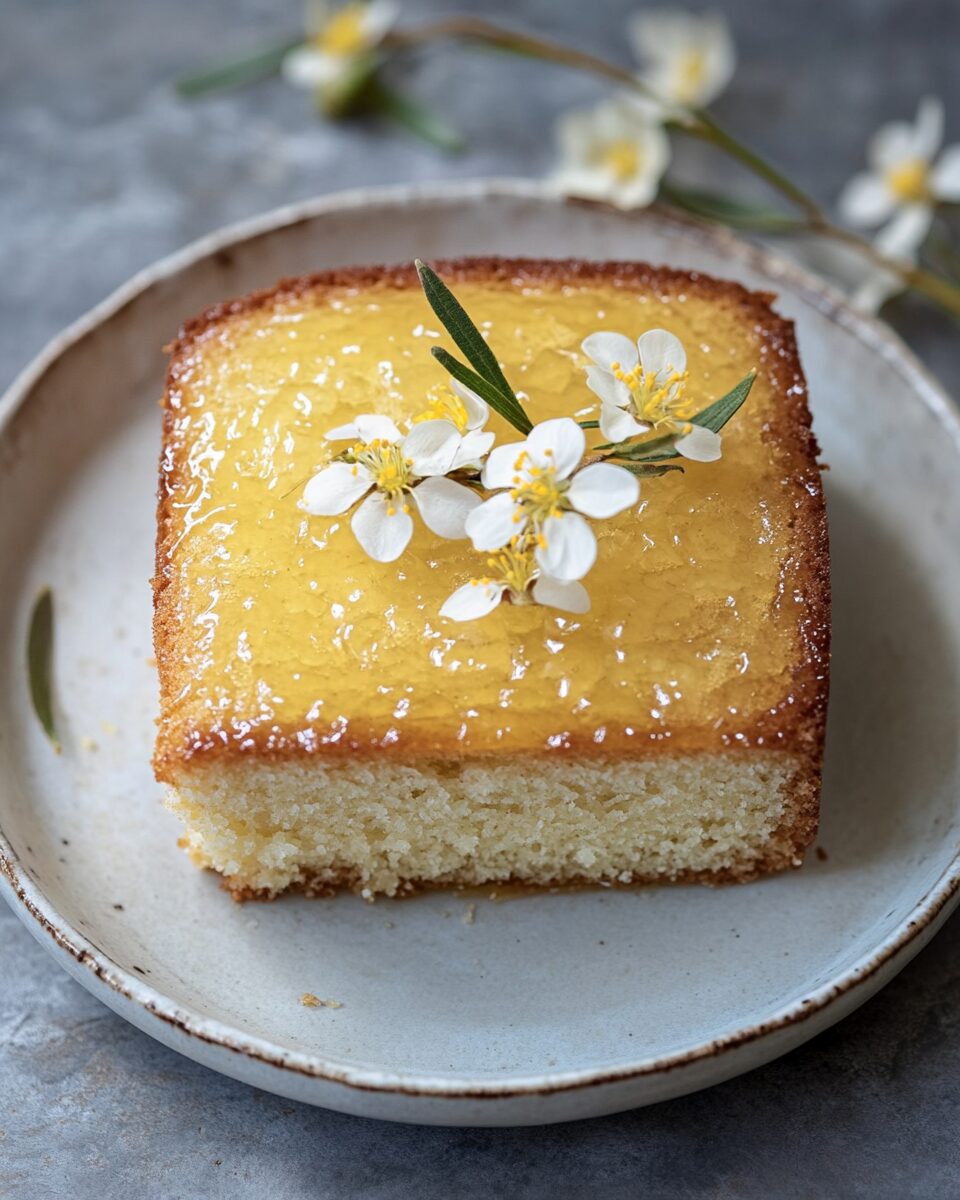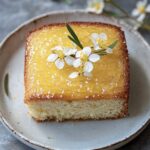The Ostara Honey Cake is more than just a sweet treat — it’s a celebration of spring’s arrival and the renewal of life. Infused with golden honey, fragrant spices, and bright citrus notes, this cake brings warmth and tradition to your seasonal table. Whether you’re hosting an Ostara gathering or simply welcoming the equinox in your own way, this cake is the perfect centerpiece.
Inspired by ancient customs and seasonal ingredients, this recipe captures the spirit of rebirth and joy. With simple ingredients and a bit of love, the cake bakes into a tender, moist dessert that’s both comforting and symbolic. Garnish with fresh herbs, edible flowers, or cream cheese frosting for a magical springtime finish.
Full Recipe:
1 cup honey
2 cups all-purpose flour
3 large eggs
1/2 cup white sugar
1/2 cup brown sugar
1 teaspoon baking powder
1 teaspoon baking soda
1 teaspoon cinnamon
1/2 teaspoon ground cloves
1/2 teaspoon allspice
1/4 cup oil
1/2 cup orange juice
Directions:
Preheat oven to 350°F (180°C). Grease and flour your cake pans.
In a large bowl, whisk together flour, baking powder, baking soda, cinnamon, cloves, and allspice.
In a separate bowl, beat together honey, oil, eggs, both sugars, and orange juice until smooth.
Gradually fold the wet mixture into the dry ingredients until just combined.
Pour batter into the prepared pans evenly.
Bake for 25–30 minutes or until a toothpick inserted into the center comes out clean.
Let the cakes cool in the pans for 10 minutes before transferring to a wire rack.
Optional: Once completely cool, top with cream cheese icing or a dusting of powdered sugar for added flair.
Prep Time: 15 minutes | Cooking Time: 30 minutes | Total Time: 45 minutes
Kcal: 320 kcal | Servings: 8 slices
The Symbolism of Ostara and Its Culinary Traditions
Ostara, also known as the Spring Equinox, is a pivotal point in the Wheel of the Year, marking the moment when day and night are of equal length. Celebrated between March 20th and 23rd, it represents a time of balance, fertility, growth, and new beginnings. For many, it is a sacred festival honoring the Earth’s renewal, with traditions deeply rooted in both pagan and agricultural rituals.
Among the foods associated with Ostara, the Ostara Honey Cake holds a place of honor. This sweet, spiced cake is more than a dessert—it’s a tribute to nature’s rebirth. The use of honey symbolizes the return of the bees and the blooming of flowers, while ingredients like eggs and spices harken back to ancient fertility rites and the awakening of life. Baking and sharing this cake is a meaningful way to honor the season’s themes and bring warmth to your spring gatherings.
A Taste of Tradition and Ancient Ritual
Honey cakes have been part of human culinary history for millennia. In ancient civilizations such as Greece, Rome, and Egypt, they were considered sacred offerings. The Greeks offered honey cakes to Artemis, the goddess of nature, while Egyptians placed them in tombs as symbols of eternity. Romans included them in seasonal rituals and feast days.
The Jewish tradition also reveres honey cake, especially during Rosh Hashanah, where it is eaten to symbolize a sweet new year. Known as lekach in Ashkenazi culture, it evolved into countless regional variations. These rich histories converge in the Ostara Honey Cake, blending cultural practices with modern kitchen creativity.
When you bake this cake, you’re participating in a timeless ritual. It’s a way of connecting with ancient wisdom, embodying spiritual reverence, and celebrating the interconnectedness of food and seasonality.
Flavor Profile and Aromatic Experience
The Ostara Honey Cake offers a deeply comforting and complex flavor profile. Honey is the star, lending natural sweetness and floral undertones that deepen during baking. Brown and white sugar enhance the richness without overwhelming the palate, allowing the spices to take center stage.
Warm spices such as cinnamon, cloves, and allspice infuse the cake with earthy, aromatic notes. These spices evoke a sense of coziness while remaining vibrant enough for spring. Orange juice adds a subtle citrus brightness, balancing the richness and lightening the crumb. Combined, these elements create a cake that is moist, fragrant, and soul-satisfying.
Texture-wise, the cake is tender with a slightly dense crumb, perfect for holding up under decorative toppings like cream cheese icing or a dusting of powdered sugar. It’s a comforting bite with layers of nuanced flavor that linger on the tongue—familiar yet celebratory.
The Importance of Ingredient Choices
Though the ingredient list is relatively simple, the quality of what you use makes all the difference. Honey should be raw, unfiltered, and locally sourced if possible. Not only does this support sustainable beekeeping, but it also brings unique regional notes to your cake, making each batch truly your own.
Spices should be fresh and aromatic. Grinding your own cloves or using freshly grated cinnamon can amplify the cake’s scent and flavor significantly. Similarly, opt for fresh orange juice rather than bottled—this small change lifts the entire profile with authentic brightness.
Eggs and flour form the structural heart of the cake, while oil ensures a moist, tender crumb. These simple pantry staples, when combined with care, yield something much greater than the sum of their parts.
How to Customize for Personal Meaning
One of the most magical aspects of the Ostara Honey Cake is its flexibility. While the traditional recipe offers a perfect balance, the cake can easily be personalized to suit your tastes or dietary needs.
For those who enjoy herbal notes, consider incorporating finely chopped rosemary or thyme. These herbs pair surprisingly well with honey and spices, adding an earthy, unexpected layer of depth. A teaspoon of lemon zest can brighten the cake further for a more vibrant spring flavor.
If you’re looking for a vegan version, you can substitute eggs with flaxseed meal and use plant-based milk and yogurt. The result remains rich and satisfying, proving that tradition can evolve with modern dietary choices.
Decorations can also carry personal symbolism. Use edible flowers such as violets or calendula for a celebration of spring’s bloom, or decorate with pastel-colored glaze and dried citrus slices for a visually stunning finish. These little touches elevate the cake from simple dessert to ritual centerpiece.
The Role of Ritual in Modern Celebrations
Baking the Ostara Honey Cake isn’t just about making a treat—it’s a ritual in itself. The act of preparing food with intention is deeply rooted in many spiritual practices. Each step, from measuring flour to stirring the batter, can be a meditative, grounding experience.
Whether you are practicing solitary traditions, honoring your ancestors, or celebrating with friends, serving this cake can be a focal point of your gathering. It invites storytelling, symbolism, and shared connection. In a world that often moves too quickly, pausing to bake something meaningful is a radical act of mindfulness and love.
You can also incorporate this recipe into altar offerings, feasts, or spiritual journaling sessions. Reflecting on what spring means to you while the cake bakes is a beautiful way to align yourself with the season’s energy.
Pairing Suggestions and Serving Ideas
This honey cake pairs beautifully with a range of springtime beverages. A floral tea, such as chamomile or lavender, complements the cake’s warm spices. For a more indulgent pairing, try it with a spiced chai latte or an herbal mead.
Serve the cake warm for extra coziness, or chilled for a more refreshing texture. It can be sliced and layered with cream cheese frosting, drizzled with honey glaze, or served plain with whipped cream. Each presentation brings out different aspects of the cake’s personality.
If serving at a feast or picnic, consider offering it with seasonal fruits like strawberries, figs, or poached pears. The contrast in texture and acidity adds dimension and makes the dish more celebratory.
Cultural Relevance and Contemporary Appeal
As people increasingly seek to reconnect with nature and their heritage, recipes like the Ostara Honey Cake are enjoying a resurgence. They offer a tangible link to cultural rituals that span centuries, while still feeling relevant in contemporary kitchens.
For food bloggers, homesteaders, spiritual practitioners, and culinary explorers, this cake speaks to a universal desire to nourish both body and soul. It offers a taste of nostalgia, spiritual symbolism, and natural beauty all in one.
Moreover, as society becomes more mindful about seasonality and food origins, cakes like this allow us to engage deeply with our local environment. Sourcing honey from nearby apiaries, using spring herbs from your own garden, and baking with intention bring profound satisfaction.
Conclusion: A Sacred Slice of Spring
The Ostara Honey Cake is more than a recipe—it’s a seasonal ritual, a spiritual offering, and a delicious reflection of the earth’s rebirth. Through its roots in ancient traditions and its adaptability for modern bakers, this cake bridges past and present with elegance and warmth.
Whether you’re baking it to mark the Spring Equinox, to share with loved ones, or simply to enjoy a quiet moment with a cup of tea, this cake offers nourishment on every level. The sweet notes of honey, the comfort of warm spices, and the symbolism woven into each slice make it a perfect centerpiece for any Ostara celebration.
By making and sharing this cake, you’re doing more than honoring a holiday—you’re continuing a story, reviving ancient wisdom, and baking a little more light into the world. Let it be a reminder of the beauty in renewal, the joy of creation, and the sweetness that can bloom from even the simplest ingredients.






